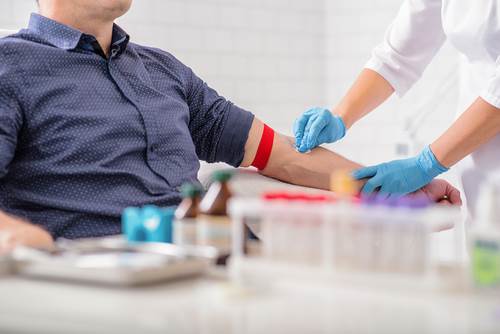Order of Blood Draw Tubes and Additives
3/19/2019

Blood samples must be drawn by phlebotomists in a specific order to avoid cross-contamination of the sample by additives found in different collection tubes. Phlebotomy order of draw is the same for specimens collected by syringe, tube holder, or into tubes preevacuated at the time of collection. The correct order of draw follows:
- Blood culture tube or bottle
- Sodium citrate tube (eg, blue closure)
- Serum tubes, including those with clot activator and gels (eg, red, red-speckled, gold closures)
- Heparin tube with or without gel (eg, dark green, light green, speckled green closures)
- EDTA tube with or without gel separator (eg, lavender, pearl, pink closures)
- Sodium fluoride/potassium oxalate glycolytic inhibitor (eg, gray closure)
The placement of tubes not listed here should take into consideration the potential for their additive to alter results obtained from the next tube if carryover were to occur. Plastic serum tubes containing a clot activator may cause interference in coagulation testing. Only blood culture tubes, glass nonadditive serum tubes, or plastic serum tubes without a clot activator may be collected before the coagulation tube.
Numerous errors can occur during the collection and handling of blood specimens, which pose significant and avoidable risks to the patient and the phlebotomist. When global standards are not fully implemented, it is more likely that patients will be injured during the procedure, biologically representative specimens will not be obtained from patients, and test results will not be comparable from one facility to another.
CLSI’s GP41 —Collection of Diagnostic Venous Blood Specimens provides a descriptive, stepwise process and procedures reflecting the quality system essentials format for diagnostic venous blood specimen collection. Special considerations for collections from vascular access devices, blood culture collection, and collections in isolation environments are included, as well as how to handle emergency situations. An expanded appendix section provides helpful tips for collecting specimens from pediatric and other challenging patients.
